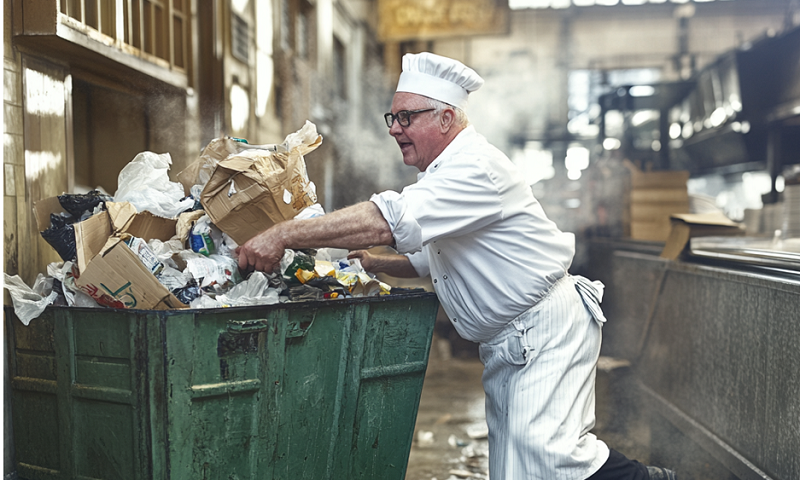Food waste is one of the most pressing challenges faced by our modern world. It goes deeper than simply tossing out leftovers. It’s a global issue with massive economic, social, and environmental impacts. Every year, one-third of all food produced is wasted—roughly 1.3 billion tons.
There’s good news if you’re in the food production space or just someone invested in sustainable living. Thanks to advancements in food processing technologies, businesses are finding practical ways to chip away at this massive issue.
The goal isn’t just to create less waste—it’s also about rethinking and transforming how food is managed across the supply chain. In this post, we’re walking through how food processing innovations are minimizing waste and driving environmental and economic benefits at the same time.
The Current State of Food Processing and Its Impact on Waste
When food reaches factories to be processed, that’s often where the largest amounts of waste occur. Some of it happens due to inefficiencies in sorting out flawed or damaged harvests. Other times, food gets thrown out during packaging, storage, or transportation because it’s not preserved well enough to last.
But here’s the thing. Traditional methods of processing food weren’t necessarily designed with waste reduction in mind. Instead, the focus was often on keeping costs low or maximizing production capacity. That approach has worked for years, but it’s clear that the environmental stakes are too high to keep doing business as usual.
Wasteful food processing practices contribute to deforestation, biodiversity loss, and the emission of methane—a potent greenhouse gas.
The technology that once helped feed the world is now creating unforeseen consequences. Thankfully, we’re seeing how this industry is rising to the challenge, deploying tech solutions, such as BOD removal techniques, that cut down on inefficiencies while keeping sustainability at the forefront.
Innovations in Food Processing Techniques and Technologies
Think about how long fresh produce or meats last once they’re packaged. Have you noticed any of the new biodegradable or compostable materials popping up? Packaging innovations like these play a crucial role in reducing waste. Advances like modified atmosphere packaging keep food fresher for longer by adjusting the gases inside the package, significantly extending shelf life and preventing spoilage.
Then there’s edible packaging—yes, packaging you can eat. While it might sound futuristic, brands like Apeel Sciences are already creating plant-based coatings that protect fruits and vegetables, keeping them fresher without plastic wrap.
Preservation Techniques
Traditional methods like freezing and drying have been around for ages, but newer preservation technologies take things further. High-pressure processing (HPP) is one example, which uses pressure instead of heat to eliminate bacteria while maintaining the food’s flavor and nutrients.
Another example is cold plasma technology, used to kill pathogens on fresh produce without damaging its texture or taste. These innovative approaches ensure that less food gets lost or rejected during production and transportation.
Optical Sorting and AI
Gone are the days when workers visually inspected crates of produce for damaged or blemished items. Optical sorting and artificial intelligence (AI) systems are now transforming how food is handled. These technologies use cameras and sensors to detect even the smallest imperfections, separating the usable items from the ones that can’t be sold.
Moreover, machine learning algorithms can help evaluate data in real time and suggest operational improvements. These tools help food manufacturers minimize loss, ensure better quality, and reduce costs—while boosting sustainability.
Environmental and Economic Benefits of Waste Reduction in Food Processing
By now, you’re getting the picture. The ripple effects of minimizing food waste go beyond keeping leftovers out of sight. From an environmental perspective, waste reduction means less methane being emitted into the atmosphere and fewer resources—like water and energy—being squandered on products that won’t even make it to store shelves.
On the economic side, waste prevention efforts lead to streamlined production, less money spent on raw materials, and improved profitability. For businesses, sustainability used to be seen as a “nice-to-have.” Now, it’s increasingly clear that choosing eco-friendly practices is an essential component of long-term growth.
Why Sustainable Food Processing is Everyone’s Business
Tackling food waste is no small feat, but the innovations in food processing are giving us real reasons to be optimistic. We’re seeing how technology can make a meaningful difference by reimagining how food is handled—from smarter packaging to advanced preservation techniques and AI-driven sorting.
Every step taken to cut down on waste means fewer resources wasted, less environmental damage, and stronger, more efficient businesses.
Whether you’re in the industry or simply a consumer making mindful choices, your actions matter. Together, we can redefine the relationship between food and sustainability.








